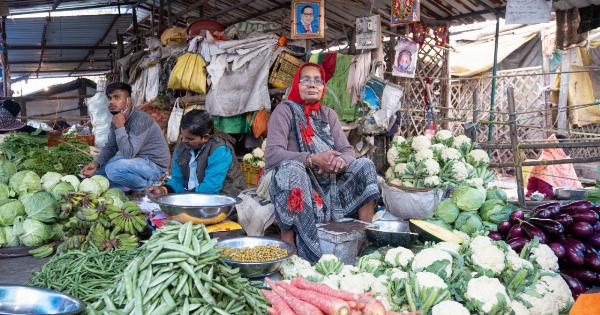Atmospheric pollution has become a major concern globally, and the increasing levels of pollution are causing significant health and environmental damage.
According to recent data, approximately 91% of the global population is breathing air that exceeds the World Health Organization’s air quality guidelines. As a result, researchers have been examining the vulnerability of different populations to atmospheric pollution to develop strategies to reduce its impact.
Defining Vulnerability to Atmospheric Pollution
Vulnerability can be defined as the degree to which a population or system is susceptible to harm from exposure to atmospheric pollutants.
Vulnerability can be influenced by a range of factors, including age, gender, socio-economic status, and pre-existing health conditions. Individuals who are more vulnerable to the effects of atmospheric pollution are likely to experience a range of adverse health outcomes, including respiratory problems, cardiovascular disease, and premature mortality.
Identifying Vulnerable Populations
Several studies have examined the vulnerability of different populations to atmospheric pollution.
One study found that individuals who live in areas with high levels of pollution are at a greater risk of adverse health outcomes, including respiratory and cardiovascular diseases. Another study found that people who have pre-existing health conditions, such as asthma or chronic obstructive pulmonary disease (COPD), are more vulnerable to the effects of air pollution than people without these conditions.
The Impact of Socio-Economic Status
Socio-economic status can also impact vulnerability to atmospheric pollution.
For example, individuals who live in low-income neighborhoods are more likely to be exposed to higher levels of pollution due to various factors such as being closer to industrial zones, transportation routes, and waste sites. Additionally, these communities may have limited access to healthcare and resources to mitigate the impact of pollution, increasing their vulnerability further.
The Role of Age and Gender
Age and gender also play a crucial role in vulnerability to atmospheric pollution. Studies have found that children and the elderly are at a greater risk of experiencing adverse health outcomes due to exposure to pollution.
Children’s respiratory and immune systems are still developing, and exposure to pollution can cause permanent damage to their health. On the other hand, the elderly are more susceptible to respiratory and cardiovascular diseases due to pre-existing health conditions.
Gender can also impact vulnerability, as women have been found to be more susceptible to the effects of air pollution due to differences in lung physiology and hormonal factors.
Insights to Reduce Vulnerability to Atmospheric Pollution
Developing strategies to reduce vulnerability to atmospheric pollution requires insights gained from these studies.
One approach is to reduce overall exposure to pollution through measures such as requiring cleaner transport options, reducing industrial emissions, and promoting cleaner energy sources. Additionally, improving access to healthcare and resources in vulnerable communities can mitigate the effects of pollution.
Governments and policymakers can also use the insights gained from these studies to develop targeted policies that focus on reducing vulnerability in communities that are more susceptible to atmospheric pollution.
The Need for Continued Research
Despite the progress made in identifying vulnerability to atmospheric pollution, there is still a need for continued research in this area.
In particular, there is a need to examine the impact of pollution on vulnerable populations in developing countries, where pollution levels are often higher, and access to healthcare and resources is limited. Additionally, exploring the long-term impacts of exposure to pollution and developing effective interventions to reduce vulnerability further will be critical in mitigating the adverse effects of air pollution.
Conclusion
The insights gained from studying vulnerability to atmospheric pollution have provided valuable information for researchers, policymakers, and healthcare professionals.
Understanding the factors that contribute to vulnerability and developing targeted strategies to reduce exposure and improve access to resources can help reduce the impact of pollution on vulnerable populations. As the global community continues to work towards mitigating the effects of atmospheric pollution, continued research in this area will be essential in developing effective interventions and policies.




























